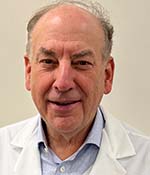
Orthopaedic surgeons face a constant stream of new products and techniques. Many physicians feel inundated with new ideas, procedures, and technology. In this crowded field of new ideas and multiple competing orthopaedic manufacturers, how does a physician with a new idea go about turning an idea into a manufactured product?
Idea generation and patents
Many products arise because of unmet needs. As an example, when Sir John Charnley, CBE, FRS, developed low-friction arthroplasty, his team refined cold-cured polymethyl methacrylate to fix his prosthesis to bone. The original suture anchor was produced more than 3 decades ago when a suture was bonded to a headless screw. Previously, all tendon-to-bone repairs were through bone tunnels. This concept has been consistently refined over the subsequent years. Countless other ideas have been developed to fix problems or fill holes in existing technology.
Once a need is identified, however, there may still be a large gap between an innovative concept and a mass-market solution. Most orthopaedic surgery programs do not offer training in innovation or entrepreneurship. Physicians often face large obstacles in finding a route to patenting, manufacturing, and selling a groundbreaking idea. It is not necessary to be the first with a new idea. An invention that is cheaper, easier to use, or easier to manufacture may lead to increased adoption over an existing product.
The initial step when developing a new idea for a product may be to perform a patent search. This process can be complicated and time consuming but may reveal whether the idea is truly new. There are several searchable patent databases that are consumer friendly, including the U.S. Patent Office (patft.uspot.gov). A literature search can also determine if that new idea is unique.
A professional patent search is essential to make the determination of whether a new idea can be patented. Filing a provisional patent allows for a 1-year period to decide whether to seek a formal patent. Filing a patent can be costly, and even simple inventions can require up to $10,000 in upfront costs. Medical devices can have additional regulatory requirements through the 510(k) pathway for devices that are substantially similar to existing technology. Each inventor should also ascertain whether their employment contract allows independent development of inventions.
Partnerships
With a patent in hand, but without experience in finance, law, or manufacturing, individual physicians may find the pathway to new product development daunting. A mentor who provides guidance on the process may be invaluable. In turn, do not make the circle of consultants too large, risking diluting the interest of the true product developer. Obtaining funding to cover upfront costs is also key.
A strategic partnership can be key to a successful start-up. A partner can help arrange financing and guidance and may be critical to bring a new idea to successful marketing and sales. Any funding opportunities should be structured to preserve owner equity.
At some point, establishing a business or identifying a company to develop and manufacture the product may be the next step. Transforming a concept to a product can take 3 to 5 years. Many innovators would prefer to develop a new idea, patent it, and then license the patent to an orthopaedic manufacturer. Royalties based on the idea are generally provided but may provide a lower return (and lower risk) than starting a new company.
In a partnership with a manufacturer, physicians are typically involved in innovating and identifying the need for a new product, whereas the company is the primary source for manufacturing and design. There are more than 5,000 medical device companies in the United States, and there may be multiple potential partners for a new idea. Large companies can have extensive research, development, and marketing capabilities. Smaller companies may have limited financial resources but may have more flexibility, resulting in a more streamlined pathway to market.
A surgeon with a new concept or product does not always earn the trust or interest of a manufacturing partner. Companies do not select surgeon partners based on surgical volume. Typically, surgeons with clinical acumen who demonstrate critical analysis combined with an understanding of the target market make the most desirable partners. Prior to entering any partnership with a manufacturer, it is best to obtain legal counsel to guide the budding partnership.
On the other hand, many existing companies may prefer not to license ideas and would rather license existing products that have a proven market. In this case, innovators may be forced to address the business aspect (i.e., starting a company for production and manufacturing) of the concept themselves if they want the product to gain acceptance. One route to starting a new business is to partner with an incubator—a company that accepts new businesses for a period of time and can provide entrepreneurial support. This type of service can be “pay as you go,” or some incubators provide the service for an equity stake in the company.
Other partnership options include government-sponsored agencies, such as the National Institutes of Health or National Science Foundation, which have programs for innovators. Local universities may also have programs to help start-up businesses.
Clarity and determination are critical characteristics to develop a successful company. You need a well-defined business plan and a clear understanding of the potential market. Many orthopaedic surgeons are already innovators in their daily work. This trait can translate to designing a marketable technique or implant. Developing a new product can be daunting, overwhelming, and time consuming, but physician innovators are key to advancing patient care.
Thomas Fleeter, MD, MBA, FAAOS, is in private practice in Reston, Virginia, with Town Center Orthopaedics. He is a member of the AAOS Now Editorial Board and chair of the AAOS Committee on Professionalism.